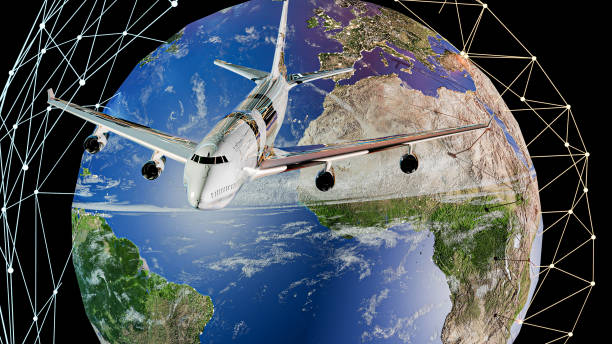APIs (Application Programming Interfaces) are emerging as the driving force determining the future of aviation technology as the aviation sector approaches a technological revolution. APIs are critical in facilitating smooth integration, data sharing, and cooperation across various aviation systems and stakeholders. APIs are leading the way in modernizing the aviation sector, from improving operational efficiency to reinventing passenger experiences. In this piece, we will look at the enormous potential and game-changing advances that APIs are bringing to the future of aviation technology.

APIs Are Paving The Way For The Future Of Aviation Technology
APIs are transforming aviation technology by integrating disparate systems and exposing a plethora of new possibilities. Airlines, airports, maintenance providers, and other stakeholders can use APIs to easily connect their systems, allowing for easy data interchange and increased operational efficiency. This integration promotes better communication, simpler operations, and more efficient resource allocation. APIs provide real-time access to key data such as flight information, passenger information, luggage tracking, and maintenance updates, allowing stakeholders to make educated choices quickly. The smooth flow of information via APIs encourages cooperation, allowing stakeholders to collaborate more effectively and discover new solutions to complicated situations.
In addition to operational improvements, APIs are altering the passenger experience by delivering tailored and integrated services. APIs allow airlines and travel firms to link their systems, providing passengers with a smooth and consistent experience across several touchpoints. APIs allow travelers to easily access real-time flight information, book flights, pick seats, and manage their itineraries. APIs also enable customized auxiliary service offers, such as tailored onboard experiences, food pre-ordering, and access to loyalty club perks. APIs will improve passenger experiences in the future by integrating with developing technologies such as biometrics, augmented reality, and artificial intelligence, resulting in a totally immersive and tailored travel adventure.
Finally, APIs are at the forefront of influencing the future of aviation technology. They allow for seamless integration, data interchange, and cooperation across diverse stakeholders, transforming operational efficiency and passenger experiences. APIs provide the real-time flow of essential information, allowing stakeholders to make better-informed decisions and collaborate more effectively. APIs will play a critical role in integrating emerging technologies into the aviation ecosystem, driving the sector to new frontiers of efficiency, connection, and customer-centricity as technology evolves. APIs are paving the way for a more connected, efficient, and passenger-centric aviation sector.
How Does Aviation API Function?
You’re probably wondering what the greatest choice on the market is right now.
We’ve tested several of the market’s alternatives and invite you to do the same if you so choose. We feel that the Flightlabs API is one of the most straightforward and powerful ways to follow an aircraft or view its status prior to takeoff.
For example, if you put an airline’s name (in this case, American Airlines) into the API endpoint “Airlines,” you’ll obtain the following results:
{
"success": true,
"data": [
{
"ageFleet": 10.9,
"airlineId": 1,
"callsign": "AMERICAN",
"codeHub": "DFW",
"codeIataAirline": "AA",
"codeIcaoAirline": "AAL",
"codeIso2Country": "US",
"founding": 1934,
"iataPrefixAccounting": "1",
"nameAirline": "American Airlines",
"nameCountry": "United States",
"sizeAirline": 963,
"statusAirline": "active",
"type": "scheduled",
},
[...]
]
}To use Flightlabs, developers must adhere to the API documentation and requirements, which describe the accessible endpoints, request parameters, and response formats. The API will then provide data in a format suitable for use by an application or service, such as JSON or XML.
Overall, Flightlabs gives developers a scalable and flexible way to access and integrate flight data into their applications and services, allowing them to deliver real-time flight information and monitoring to users.
What Is The Location Of This Aviation API?

- Set up a FlightLabs account. Then choose the desired endpoint or enter the IATA or ICAO codes for the airport or airline.
- Enter these codes before contacting the API. On your account dashboard, you will be given a unique API key.
- Finally, hit the “run” button to complete the process! The API will be displayed on your screen. You might also select a programming language.
- That’s all there is to it! You will then be given access to all of the aircraft’s accessible data in JSON format.
Related Post: An API As An End-to-end Solution For Aircraft Data Management

